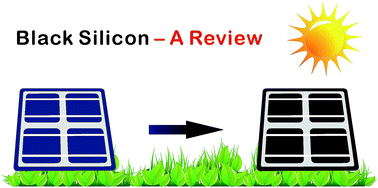Black silicon: fabrication methods, properties and solar energy applications
Abstract
Black silicon (BSi) represents a very active research area in renewable energy materials. The rise of BSi as a focus of study for its fundamental properties and potentially lucrative practical applications is shown by several recent results ranging from solar cells and light-emitting devices to antibacterial coatings and gas-sensors. In this paper, the common BSi fabrication techniques are first reviewed, including electrochemical HF etching, stain etching, metal-assisted chemical etching, reactive ion etching, laser irradiation and the molten salt Fray-Farthing-Chen-Cambridge (FFC-Cambridge) process. The utilization of BSi as an anti-reflection coating in solar cells is then critically examined and appraised, based upon strategies towards higher efficiency renewable solar energy modules. Methods of incorporating BSi in advanced solar cell architectures and the production of ultra-thin and flexible BSi wafers are also surveyed. Particular attention is given to routes leading to passivated BSi surfaces, which are essential for improving the electrical properties of any devices incorporating BSi, with a special focus on atomic layer deposition of Al2O3. Finally, three potential research directions worth exploring for practical solar cell applications are highlighted, namely, encapsulation effects, the development of micro-nano dual-scale BSi, and the incorporation of BSi into thin solar cells. It is intended that this paper will serve as a useful introduction to this novel material and its properties, and provide a general overview of recent progress in research currently being undertaken for renewable energy applications.


 Please wait while we load your content...
Please wait while we load your content...